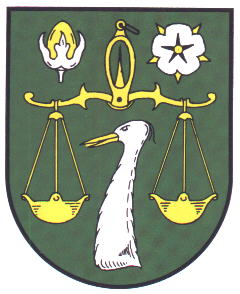Hassel (Weser): Difference between revisions
Jump to navigation
Jump to search
Knorrepoes (talk | contribs) m (Text replace - "'''Origin/meaning :'''<br/>" to "====Origin/meaning====") |
Knorrepoes (talk | contribs) m (Text replace - "|width="15%"|50 px|right |}" to "|width="15%"|50 px|right |}<seo title="Wappen, Gemeindewappen" />") |
||
| Line 3: | Line 3: | ||
|width="70%" align="center" |'''Heraldry of the World<br/>Civic heraldry of [[Germany]] - [[Deutsche Wappen|Deutsche Wappen (Gemeindewappen/Kreiswappen)]]''' | |width="70%" align="center" |'''Heraldry of the World<br/>Civic heraldry of [[Germany]] - [[Deutsche Wappen|Deutsche Wappen (Gemeindewappen/Kreiswappen)]]''' | ||
|width="15%"|[[File:Germany.jpg|50 px|right]] | |width="15%"|[[File:Germany.jpg|50 px|right]] | ||
|} | |}<seo title="Wappen, Gemeindewappen" /> | ||
Revision as of 17:27, 5 November 2012
| Heraldry of the World Civic heraldry of Germany - Deutsche Wappen (Gemeindewappen/Kreiswappen) |
HASSEL
State : Niedersachsen
District (Kreis) : Nienburg
Samtgemeinde : Eystrup
Origin/meaning
The arms were officially granted on April 30, 1960.
The haselnut is a canting element (Hasel), the name is derived from Haslo, or 'place near the hasel forest'. The rose and the crane's head are taken from the arms of the medieval Lords of Hassel, known since 1219.
The scales are a symbol of justice and symbolise the fact that during many centuries criminals were executed in the village, condemned by the court of the Amt Hoya. The last criminal was executed in 1846.
Literature : Ziegler, 1986

